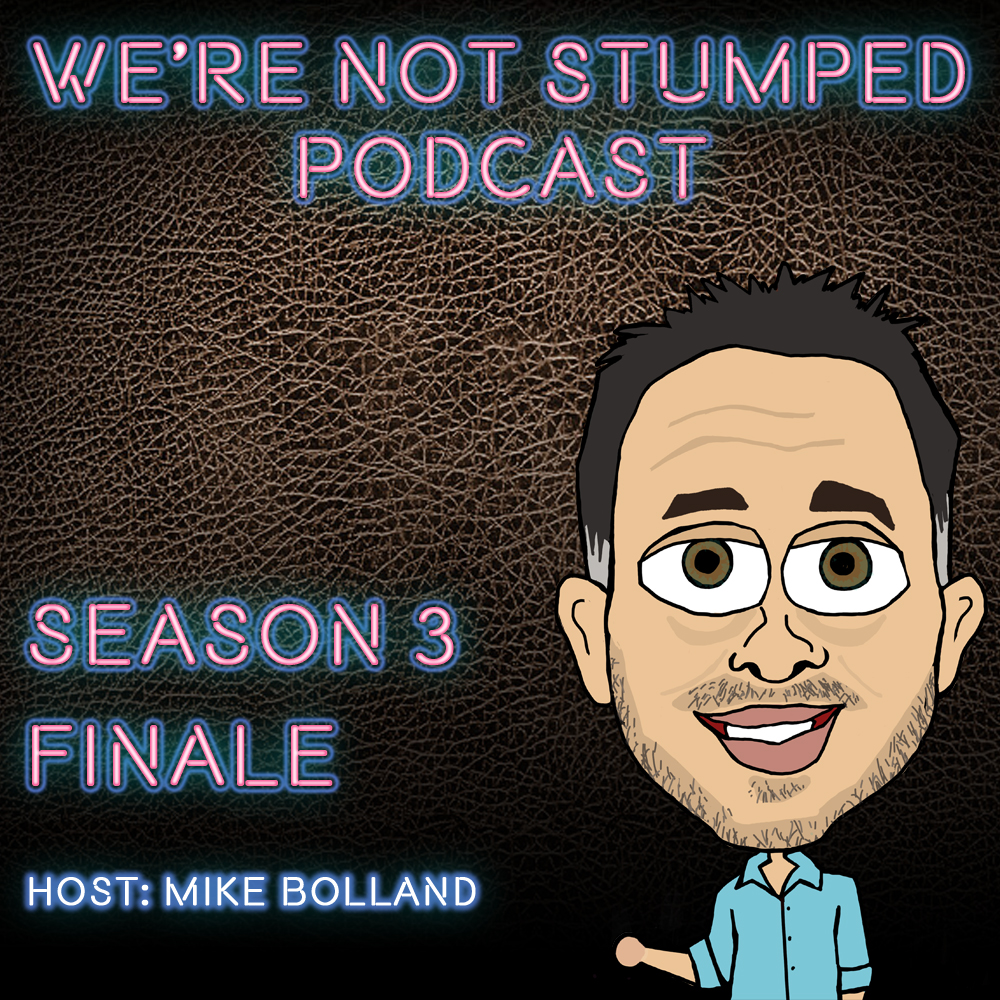Congenital Amputee Podcast
We’re Not Stumped Season Three Finale With Host Mike Bolland
Season three is a wrap, and what a great season! In this season 3 finale, I give a brief overview of all this season’s episodes. I then talk about three upcoming season four episodes and my one-man show called "I'm not Stumped". Want to be considered as a guest? Fill out the form here: Contact
Special 40th We’re Not Stumped Congenital Upper Limb Loss Podcast with Billy Jack History
Are you a #prosthetist? Do you find vintage #prosthetics interesting? Then this special edition 40th episode of the We’re Not Stumped podcast is a must see! I will show you some of my oldies – prosthetics from a different era that I just found after many years. My starter #prosthesis, which is a rubberized
Congenital Limb Difference Podcast Angie Sandow
My guest in this episode of the We’re Not Stumped podcast is the closest to me than any other guest I’ve had the pleasure to have on. Her name is Angie Sandow, and just like me, she was born without a right hand. What an honor to have her on! As she always does,
Were Not Stumped Amputee Podcast Season 2 Finale with Mike Bolland
Season 2 is in the books! In this season two finale episode, I have three main topics: My thoughts on prosthetics: I am sick of how amputees who choose not to wear prosthetics are treated within the amputee community. I also get disgusted by prosthetic manufactures who dismiss certain people in the community in
We’re Not Stumped Podcast Episode 1 with guest Nicole Kelly
In the first episode of the We're Not Stumped podcast, I'm very honored to have Nicole Kelly as a guest. Like me, Nicole is an congenital amputee of an upper extremity. Nicole was Miss Iowa 2013 and competed in the Miss America Contest in 2014 and she talks about that experience in this podcast.
About Congenital Amputees
A “congenital amputee” is an individual who is born with one or more limbs missing or underdeveloped. In congenital amputation, the absence of a limb occurs during the prenatal development of the fetus and is typically due to genetic factors or developmental issues in the womb.
Congenital amputations can affect any limb, including the arms and legs, and they can vary in severity. Common causes and factors contributing to congenital amputations include:
- Genetic Factors: Some congenital limb differences are linked to genetic mutations or conditions that affect limb development during early fetal development.
- Teratogens: Exposure to teratogenic substances or environmental factors during pregnancy can disrupt normal limb development, leading to congenital amputations.
- Vascular or Blood Flow Issues: Insufficient blood flow to the developing limbs during pregnancy can result in limb malformation or amputation.
- Amniotic Band Syndrome: In some cases, fibrous bands in the amniotic sac can entangle and constrict fetal limbs, causing limb differences.
- Congenital Disorders: Certain congenital disorders, such as ectrodactyly (also known as “lobster claw hand”), thalidomide syndrome, or Holt-Oram syndrome, can result in congenital limb differences.
Congenital amputees face unique challenges related to their limb differences, but they often learn to adapt and find ways to perform daily activities and pursue their goals. Depending on the severity and location of the limb difference, some individuals may benefit from assistive devices, prosthetic limbs, orthotic devices, or surgical interventions to improve their functionality and quality of life.
Supportive environments, education, and access to healthcare and rehabilitation services are essential for individuals with congenital amputations to thrive and fully participate in society. Advocacy groups and organizations dedicated to limb differences often provide valuable resources and support to individuals and their families.






